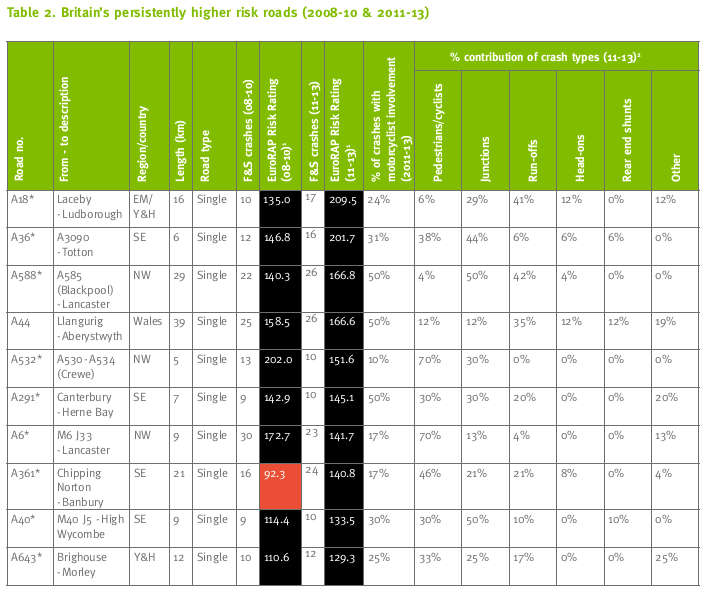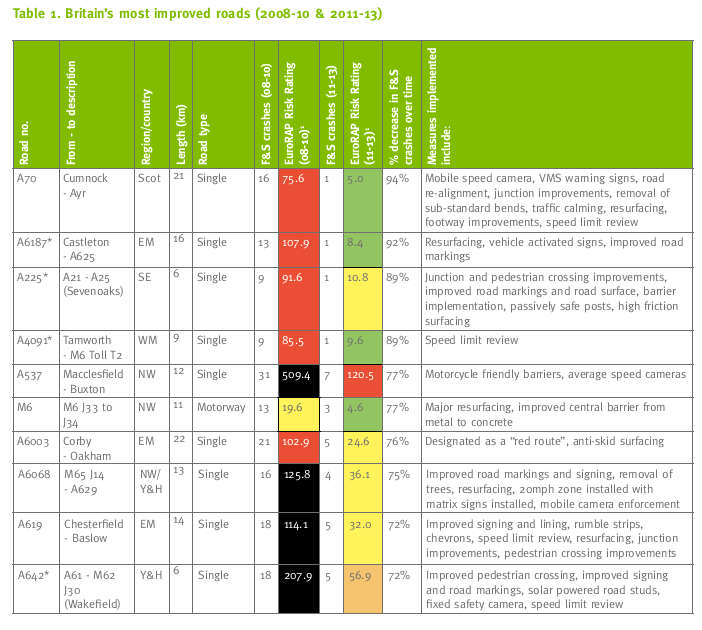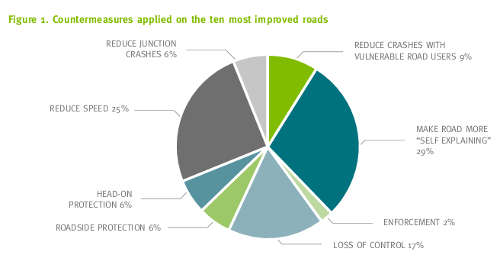The most dangerous stretches of road in the country have been revealed in a new report that details the staggering impact of crashes, with the total cost of reported road accidents estimated to be roughly £14.7bn a year.
An average of 67 people are killed or seriously injured (KSI) on British roads every day, with half of all incidents still happening on motorways and A-roads that amount to just 10% of the network.
On average, Britain's single carriageways are now eight times more dangerous than a motorway, with the most dangerous road in the country a rural and tree lined ten-mile stretch of the A18 in Lincolnshire – between Laceby and Ludborough – which presented the ‘most persistent high risk’.

The most dangerous roads
Fatal and serious crashes on the A18 increased from 10 in 2008-10 to 17 in 2011-13 according to the report by the Road Safety Foundation.
For the first time the report did not feature the A537 between Macclesfield and Buxton in its top ten most dangerous, with serious crashes falling from 31 to seven between 2008-10 and 2011-2013. This was attributed to safety measures including a motorcycle-friendly barrier and average speed cameras.
Wales and the East Midlands are overall the riskiest places to use the roads however single carriageways in the South East were the worst performing and nearly twice as risky as those in the West Midlands. Single carriageways in the North West also under perform, the report found.
Lord Whitty of Camberwell, chairman of the foundation, said the pace of improvement was too slow adding that the most improved roads ‘show just how effective small infrastructure improvements can be’.
Major improvements have been made on just 2% of the network. The top ten most improved roads included local authority managed A-roads and showed an 80% reduction in KSIs between 2008-2010 to 2011-13 or 164 to 33.
The Road Safety Foundation found from consultation with authorities that ‘straightforward attention to detail - such as improved road markings, junction layouts, speed limits, and pedestrian crossings - enabled authorities to reduce road crashes by 80% on the 10 most improved sections’.

Most improved roads
Lord Whitty said: ‘On major A-roads the margin for human error is often too small. The largest cause of death is running off the road (30%), where poor road side protection can see brutal impacts take place.
'Junctions remain the largest source of serious injury as vehicle side impact protection is at its most limited. We can expect improvements in vehicles collision detection systems at junctions, but the laws of physics will not be rewritten. The road safety infrastructure and new vehicle systems need to be developed hand in hand if we want to see a real increase in road safety.’
He added that over the last decade most of the genuine progress in reducing casualties has come from safer vehicles.

Road safety counter measures